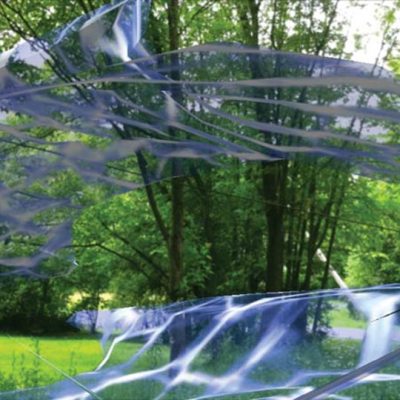The theme of this year’s curated section at TEFAF Maastricht is the wound – a rather thorny subject to throw in among the carefully cultivated gallery stands and their equally cultivated guests. But it’s also a subject that has taken root in Western art, from classical depictions of vengeful gods, to the pious suffering of Christian saints, to modern art that grapples with more recent wars and injustices. The contemporary artworks assembled by Mark Kremer for ‘Show your Wound’ are intended to show just how compelling the subject continues to be, even among artists who deliberately avoid its more traditional motifs.
Kremer – a curator and art historian based in Amsterdam – was invited to put together a display following the success of Sydney Picasso’s inaugural show, ‘Night Fishing’, in the same spot last year. He responded to a generously open brief with a similarly open-ended project, inspired by Joseph Beuys’ Show your Wound from 1976, a bleak installation of dissection tables, agricultural implements and other items in a Munich underpass. ‘Show your Wound talks about ethics: how we take care of ourselves, how we build ourselves, how we build social worlds, how we take care of nature’, Kremer explained on the opening day. ‘There is a concern, a deep concern in this world, about these things. So it’s a work that reaches out to people’. Treating the piece as a ‘point of departure’, he approached seven artists from seven different galleries to present works in response.
Some, like William Tucker (represented by Buchmann Galerie – all the works on display are for sale), show pieces that pre-date the concept of the show. The British sculptor’s enormous Ouranos, named after the powerful Greek god of the sky, looms over the fair’s visitors like the malformed foot of a wrecked colossus, as visually powerful now as when it was made in 1985. Others made pieces specifically for the fair. ‘John Murphy had a work in his mind already’, Kremer explained, ‘and he proposed to make it for the exhibition because it shows a wound of the soul’. In the Midst of Falling. The Cry… (2016) is a large photograph that depicts, on one side, a still from a 1960s movie in which a beautiful woman appears frozen in horror or surprise – ‘gasping for air’, as Kremer puts it. On the other side is shown a blown-up detail from Masaccio’s Expulsion from the Garden of Eden, showing ‘that moment when Eve puts her hands before her face and cries, cries out loud.’ ‘So you have a repeated motif’, Kremer goes on, ‘but it’s amplified; you see the actual emotion…It’s a psychological wound’.
Completely different are three works by Pedro Cabrita Reis (Gate of Hell; Purgatory; and Solitary) – a selection from 10 that the artist made after Kremer first approached him, and that the curator still seems to be figuring out himself. The enigmatic works incorporate everyday construction materials – wood, panes of glass, fluorescent lights, and ‘that particular type of orange paint that is used in construction’ – into abstract compositions, but their titles explicitly refer to human suffering. ‘They are all things that you recognise and that are somehow close to architecture, but then it’s just a bit different’, the curator suggests. ‘Perhaps what you are looking at is an encrypted picture of the state of the mind – I’ve thought of this only now as I talk with you about it. I think in this instance the works look quite severe, and put you at a distance, but perhaps there’s something else going on. Perhaps it’s more about a state where the emotion is so strong, it’s not possible to talk about about in a normal way.’ A roundabout route to the subject, certainly, and yet there is something about the glaring orange and sheet glass in the Gate of Hell that puts me mind of Francis Bacon’s Three Figures at the Base of a Crucifixion – the raging colour a visual substitute for raging but mute emotion.
‘Show your Wound’ is an eclectic group of works, and an ambitious choice for a small display in so vast and crowded a setting. But it’s this deliberate thorniness and curatorial inventiveness that could ultimately become the signature strength of TEFAF’s Curated section. In a fair full of connoisseurs, Kremer celebrates provisionality and change. ‘You start with an idea or a concept, then there’s an open trajectory, and a new work arises. I like very much to work in that way; to see where this process takes you and to live with the energy of the artist as well.’



